The Epistles of John: Living in Truth and Love
This year I am beginning a study into the letters of John. I will be posting the study here online as well as teaching it at the church I attend. If you are in the area of Wausau Wisconsin and want to attend the class live, it is at Wausau campus of Highland Community Church and starts about 9:20 AM every Sunday from Labor Day through Memorial Day. In my classes, I encourage questions and discussions, so if you have questions about the class, feel free to send me an email at elgin@hushbeck.com and be sure to put “Epistles of John” in the header.
Week One: Sept 11, 2011
Background
This week we will deal with a lot of the background information. Some consider this unimportant and boring, but it can be important to understanding the context of the letters, and thus to understanding the letters themselves. As you will see as we go, I am a very big believer in the importance of context. So we will be spending some time, not only on the background information, but also the structure of the letters particularly 1 John.
One advantage of the online version will be that you can skim this background information for the moment, and just focus on the conclusions. Later as issues arise in the letters, you can refer back here as needed.
Finally, this is a class, not a full commentary. Thus, what I am presenting here, particularly in this first week, is the summary of my studies. While many may conclude I am going into too much detail, a few will notice the large amount of information I am skipping over. I can only say that this is a balancing act. If you think I am out of balance, feel free to ask a question. With that said, let’s get started.
Author
As one begins to look at the authorship of these three letters one thing that quickly becomes clear is that they are very closely linked to the Gospel of John. Even a causal reading reveals a marked similarity between all four documents (Gospel + 3 letters) and that they are somewhat different from other books in the New Testament. (Note: The similarity or difference with the book of Revelations raise some other issues which will not be addressed here.)
While some scholars claim that the internal evidence point to different authorship, these are arguments are very weak for the following reasons.
1) 2 and 3 John are too short for conclusions. They seem to have the same author but there are not long enough to reach a firm conclusion either way.
2) The Gospel and all three epistles do show a strong relationship in language. For example, they all present similar themes in terms of opposites with no middle ground such as Light/Dark, Life/Death, Truth/Lie, Love/hate.
3) As for the supposed difference between them, they are easily accounted for by context.
Thus in Gospel, the Holy Spirit is our paraclete (counselor) while in 1st John it is Jesus. But this is not a conflict because John 14:16 make it clear that the Holy Spirit is “another counselor” and that the Spirit is coming because Jesus is leaving.
2 and 3 John were letters sent by “the elder.” 1 John does not identify the author, though it is clear he was known to those to whom he wrote. The Gospel, likewise, does not identify the author by name, but there are enough details in the account to see that the author was the Apostle John.
Bottom line: The internal evidence is for a common authorship of the Apostle John.
When we come to the external evidence it is both early and clear. In particular, are Papias, who knew and studied under John, and Iraenaeus who studied under Polycarp, who like Papias knew and studied under John. Both were in a position to know, and both identified John as the author.
Often these early sources simply appear as references, but I thought it might be nice to actually quote them. First are a number of allusions to the letters of John, i.e., that is the message and words seem to be strongly influenced by these letters, but without a direct citation. These will be followed by the passages in John’s letters that appear to be the source. Finally I will cite some passages where the source is identified as John. Note that the parts in bold are the parts that are influence by John’s letters.
Allusions:
Clement of Rome – AD 96
1 Clement 49:5 Love joineth us unto God; love hideth a multitude of sins; love beareth all things; is long suffering in all things. In love there is nothing illiberal, nothing haughty. Love hath no schism; love maketh not sedition; love doth all things in harmony; in love all the elect of God have been made perfect. Without love nothing is acceptable unto God.
1 Clement 50:3 All the generations, from Adam even unto this day, are gone by; but they who have been made perfect in love according to the grace of God inhabit the abode of the pious, and shall be made manifest in the visitation of the kingdom of Christ.
Didache AD 90-120
Didache 10:5 Remember, Lord, Thy Church to deliver it from all evil and to perfect it in Thy love;
and gather it together from the four winds- even the Church which has been sanctified-into Thy kingdom which Thou hast prepared for it; for Thine is the power and the glory for ever and ever.
1 John – Perfected in Love
1 John 2: 5 But whoever continually keeps his commandments is the kind of person in whom God’s love has truly been perfected. This is how we can be sure that we are in union with God.
1 John 4:12 No one has ever seen God. If we love one another, God lives in us, and his love is perfected in us.
1 John 17-18 There is no fear where love exists. Rather, perfect love banishes fear, for fear involves punishment, and the person who lives in fear has not been perfected in love.
The Epistle of Barnabas – c130
Barnabas 5:9 – 11 And when He chose His own apostles who were to proclaim His Gospel, who that He might show that He came not to call the righteous but sinners were sinners above every sin, then He manifested Himself to be the Son of God. 10 For if He had not come in the flesh neither would men have looked upon Him and been saved, forasmuch as when they look upon the sun that shall cease to be, which is the work of His own hands, they cannot face its rays. 11 Therefore the Son of God came in the flesh to this end, that He might sum up the complete tale of their sins against those who persecuted and slew His prophets.
Barnabas 12:10 Behold again it is Jesus, not a son of man, but the Son of God, and He was revealed in the flesh in a figure. Since then men will say that Christ is the son of David, David himself prophesieth being afraid and understanding the error of sinners; The Lord said unto my Lord, Sit thou on My right hand until I set thine enemies for a footstool under Thy feet.
Polycarp Epistle to the Philippians c135
Polycarp 7:1 For every one who shall not confess that Jesus Christ is come in the flesh, is antichrist: and whosoever shall not confess the testimony of the Cross, is of the devil; and whosoever shall pervert the oracles of the Lord to his own lusts and say that there is neither resurrection nor judgment, that man is the firstborn of Satan.
1 John – Come in the Flesh
1 John 4:2-3 This is how you can recognize the Spirit of God: Every spirit that acknowledges that Jesus Christ has come in the flesh is from God, 3 But every spirit who does not acknowledge Jesus is not from God. This is the spirit of the antichrist. You have heard that he is coming, and now he is already in the world.
2 John – Come in the Flesh
2 John 1:7 Many deceivers, who do not acknowledge Jesus Christ as coming in the flesh, have gone out into the world. Any such person is the deceiver and the antichrist.
Direct Mentions:
Papias 110-140
Eusebius Church History Book 3 39:16 16. But concerning Matthew he writes as follows: “So then Matthew wrote the oracles in the Hebrew language, and every one interpreted them as he was able.” And the same writer[Papias] uses testimonies from the first Epistle of John and from that of Peter likewise. And he relates another story of a woman, who was accused of many sins before the Lord, which is contained in the Gospel according to the Hebrews. These things we have thought it necessary to observe in addition to what has been already stated. (Note: First Epistle is Eusebius’ term not Papias’)
Irenaeus c 180
Against Heresies Book 3 16 2. That John knew the one and the same Word of God, and that He was the only begotten, and that He became incarnate for our salvation, Jesus Christ our Lord, I have sufficiently proved from the word of John himself… he has thus testified to us in his Epistle: “Little children, it is the last time; and as you have heard that Antichrist does come, now have many antichrists appeared; whereby we know that it is the last time. They went out from us, but they were not of us; for if they had been of us, they would have continued with us: but [they departed], that they might be made manifest that they are not of us. Know therefore, that every lie is from without, and is not of the truth. Who is a liar, but he that denies that Jesus is the Christ? This is Antichrist.” Loosely quoted from 1 John 2:18
Against Heresies Book 3 16 8 And again does he [John] say in the Epistle: “Many false prophets are gone out into the world. Hereby know ye the Spirit of God: Every spirit that confesseth that Jesus Christ is come in the flesh is of God; and every spirit which separates Jesus Christ is not of God, but is of antichrist.” 2 John 7-8
Bottom line: Taken as a whole, the external and internal evidence is strong that all 4 documents (Gospel & Epistles) were written by the same person, and that this person was the Apostle John.
While this conclusion is question by more liberal scholars, I believe it to be solid. In fact, it is so solid that it raises question as to why these scholars continue to question the authorship of John. For those interested, I wrote a post on this when I was doing this part of the research, and I refer those interested to that post.
Recipients
With the authorship established the next question is to whom did John write? This will of course depend on the letter.
1 John has no address or greeting that was the normal custom of the time. Its only parallel among the “letters” would be the book of Hebrews. Based on evidence from the letter itself, it would seem that 1 John was sent to a church.
2 John is a more conventional letter and was written to, “the chosen lady and her children.” For reasons we will go into when we get there, I believe that this refers to a particular church and its members.
3 John was written to a person named Gaius. Unfortunately this was a very common name in the 1st century and so does not help us much with identifying the particular person. It would somewhat be like finding a letter in Mexico addressed simply to “Jesus” or in Saudi Arabia addressed to “Mohammed.” The Gaius mentioned in 3 John, was probably not one of the other Gaius’ mentioned in the Bible, although there is a 4th century document that says it was sent to Gaius of Derbe in Acts 20:4.
Reasons for the letters
While we will go into the details for this as we work our way through each letter, here is a summary as to why the letters were written.
1st John
It seem that a splinter group had begun to question key teachings the faith and as a result had broken away from the church to whom the letter was written.
2nd John
Unnamed traveling preachers were spreading false doctrines.
3rd John
Diotrephes, a leader in the local church, was resisting John’s oversight and causing problems.
Date
Since John died around AD 98, that would put an upper limit on the date. As we saw above Clement appeared to use 1 John in his letter written in 96, which would move the upper limit for 1 John a few years earlier.
The date of 1 John is linked to the date of the Gospel. This is because, as we will see later, it would appear that the splinter group talked about in the letter, was an early version of Gnosticism, a religious movement that would really take shape in the 2nd century. Gnostics liked large parts the Gospel of John with it imagery of, for example, light and darkness. Of course they ignored those parts that directly conflicted with their views, but overall they like the Gospel of John. Many scholars have pointed out that 1 John can be seen as a corrective, not so much to the Gospel, but to the distortion of the Gospel by these early Gnostics.
From this we can draw two conclusions: Firstly, the Gospel was written before Gnosticism became an issue otherwise John would probably have been a little clearer so as not to leave room for Gnostic distortions. Secondly, 1 John was written long enough after the Gospel, such that this early form of Gnosticism could begin to grow, and to begin to distort the Gospel.
Some other factors are that in the Gospel there is no indication of the destruction of the temple (70 A.D.), which would indicate that it was either written before the temple was destroyed, or long enough after that it was no longer an issue. Finally, it would appear likely based on John 21:19 that Peter was already dead when the Gospel was written which would place it after 65 AD. This also makes it more likely that the Gospel was written after the destruction of the temple in 70 AD than before.
All of this taken together would tentatively point to a date in the early 80s for the Gospel, which would then put 1 John somewhere in the early 90s. Since the traveling preachers in 2 John have similar teaching to the group in 1 John it was probably written about the same time. 3 John on the other hand could have been written at almost any time during the latter part of John’s life.
Order of Writing
The order found in the NT does not necessarily reflect the order in which they were written. In fact, 1 John was probably put first because it was the largest. So we do not really know what order in which they were written.
There does seem to be an progression in the nature of the problems, with 3 John addressing a church leader who was rejecting John’s authority, 2 John addressing the arrival of traveling teachers spreading false teachings, and 1 John dealing with a split in a church over false teaching similar to those of the traveling teachers in 2 John. Yet we do not even know if the letters were all sent to the same church, much less addressed common problems.
Still this progression of problems is a useful way to approach these letters. Even if it is not a chronological order, it is still a useful order.
So we will start our study beginning with 3 John and then working our way back to 1 John. This will have the added advantage of giving more emphasis to 2 and 3 John, rather than treating them as after thoughts.
So Next week will pick up with 3 John 1:1. Again if you have question about the class, feel free to send me an email at elgin@hushbeck.com and be sure to put “Epistles of John” in the header.
References
Some have asked me about the source material I use for in my research. So for those who are interested, here are the major sources I am using in this study.
English Translation
Scripture taken from the Holy Bible: International Standard Version®. Copyright © 1996-2008 by The ISV Foundation. ALL RIGHTS RESERVED INTERNATIONALLY. Used by permission. www.isv.org
Note: Some places I have modify the text from the version ISV. Passages that I have modified have been noted and the ISV text included in a footnote.
Main Commentaries
I Howard Marshall; The Epistles of John. The New International Commentary on the New Testament.
Glen W. Barker; 1,2 & 3 John, The Expositor’s Bible Commentary, Vol 12
Other References
Friberg Greek Lexicon
Louw-Nida Greek Lexicon
Cleon L. Rogers Jr, Cleon L. Rogers III; The New Linguistic and Exegetical key to the Greek New Testament
D. A. Carson; The Gospel According to John.
Donald Guthrie, New Testament Introduction.
D.A. Carson, Douglas Moo, and Leon Morris; An Introduction To the New Testament.
Bruce M. Metzger, A Textual Commentary on the Greek New Testament
W. Hall Harris II, The Prologue of 1 John (1:1-4) http://bible.org/seriespage/prologue-1-john-11-4
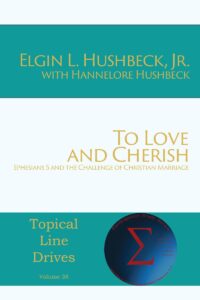

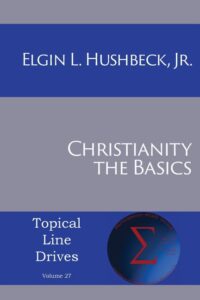
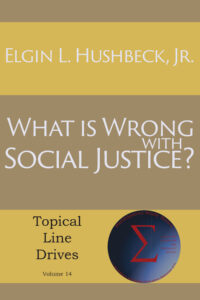
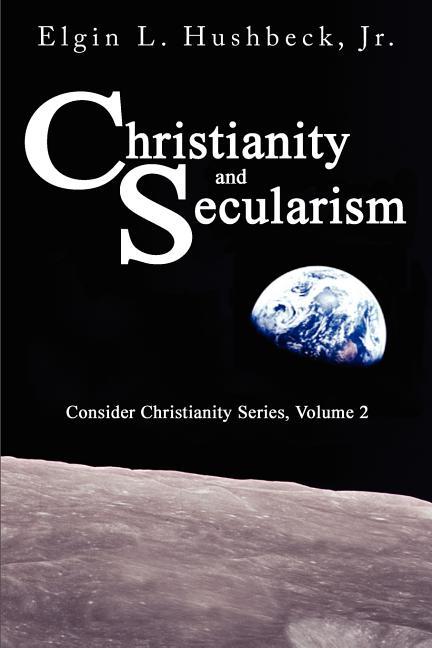

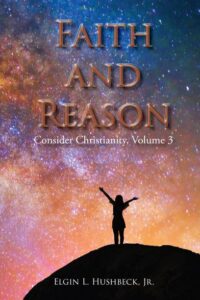
August 13th, 2012 at 11:34 pm
[…] See here for background […]
August 13th, 2012 at 11:34 pm
[…] See here for references and more background on the class. […]
August 13th, 2012 at 11:35 pm
[…] See here for references and more background on the class. […]
August 13th, 2012 at 11:35 pm
[…] See here for references and more background on the class. […]
August 13th, 2012 at 11:36 pm
[…] See here for references and more background on the class. […]
August 13th, 2012 at 11:36 pm
[…] See here for references and more background on the class. […]
August 13th, 2012 at 11:36 pm
[…] See here for references and more background on the class. […]
August 13th, 2012 at 11:37 pm
[…] See here for references and more background on the class. […]
August 13th, 2012 at 11:37 pm
[…] See here for references and more background on the class. […]
August 13th, 2012 at 11:37 pm
[…] See here for references and more background on the class. […]
August 13th, 2012 at 11:37 pm
[…] See here for references and more background on the class. […]
August 13th, 2012 at 11:38 pm
[…] See here for references and more background on the class. […]
August 13th, 2012 at 11:38 pm
[…] See here for references and more background on the class. […]